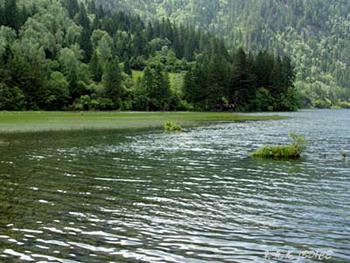| Home / English Column / Environment | Tools: Save | Print | E-mail | Most Read |
| Huge Funds Embarked to Clear Three Gorges Dam |
| Adjust font size: |
According to officials with the China Yangtze River Three Gorges Project Development Corporation, the garbage floats from the upstream of the Three Gorges reservoir amount to 100,000-200,000 cubic meters annually at the Dam, most of which accumulate in flooding seasons.
"Reservoirs worldwide are being more or less beset by floats. The Three Gorges reservoir is no exception, as it intercepts floats from upstream while it holds water," said Hu Xing'e, who is in charge of reservoir business in the China Yangtze River Three Gorges Project Development Corporation. The corporation has spent more than 20 million yuan (US$2.5 million) on building a garbage-clearing vessel, so far the largest of its kind in Garbage floats collected will be sorted out and then be buried or fired, the officials added.
The corporation has entrusted governments of central Besides, the corporation has entrusted the Yangtze River Hydrological Bureau Three Gorges Branch to scrutinize ingredients, quantity, sources, distribution and way of moving of the garbage floats. Effective measures will be worked out on the basis of data gathered by the hydrological bureau to protect the environment of the dam site.
The hydrological bureau's Three Gorges branch has launched 10 fixed monitoring stations in the dam area, which are engaged in conducting regular monitoring every day. It also cruises the dam area for garbage examination once a month. Launched in 1993, the 180-billion-yuan (US$22.5 billion) Three Gorges project, including a 185-meter-high dam and 26 generators on both banks of the Yangtze River, is being built in three phases on the middle reach of It is scheduled for completion in 2009 and by then, it will be able to generate 84.7 billion kwh of electricity a year. The project will also function to harness flooding and benefit shipping.
(Xinhua News Agency May 20, 2006) |
| Tools: Save | Print | E-mail | Most Read |
 |
| Related Stories |


